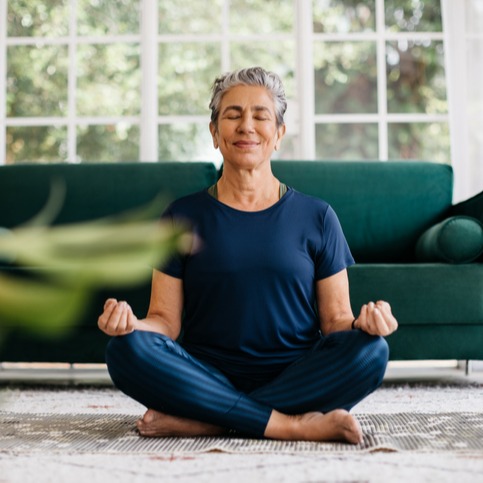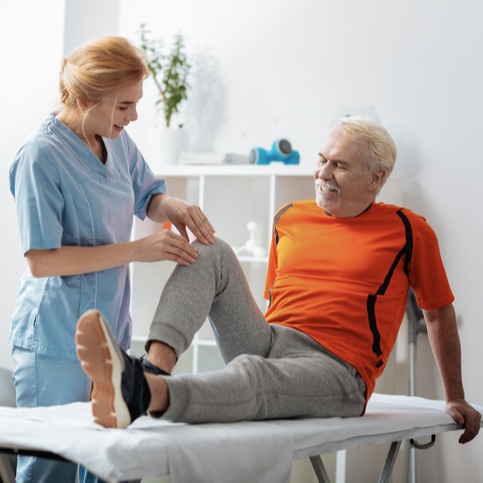
Considering the myriad benefits of walking to the elderly, it becomes evident that this simple activity is more than just physical exercise; it's a gateway to enhanced overall well-being. As we explore the potential of walking to mitigate various health risks, improve mental clarity, and foster social connections, it is crucial to also examine the preparatory measures that ensure safety and effectiveness of walking programs for seniors. The right approach not only maximizes the health benefits but also aligns with individual capabilities and conditions, creating a tailored experience that could significantly improve quality of life. What remains to be seen, however, is how these strategies practically unfold in diverse settings and individual scenarios.
Key Takeaways
Choose supportive footwear and consider using aids like canes or walkers for stability.
Start with short walks and gradually increase the duration based on comfort.
Walk during safe times in well-lit, even terrain areas to prevent falls.
Stay hydrated and dress appropriately for varying weather conditions.
Engage in social walks to boost mental health and reduce loneliness.
Benefits of Regular Walking
Regular walking significantly benefits elderly individuals by reducing the risk of chronic diseases, improving physical coordination, and enhancing mental health. Engaging in regular walking routines helps improve cardiovascular health by significantly lowering the risk of heart disease. In fact, studies show that walking can reduce heart-related issues by 30-50% among the elderly. This exercise not only strengthens the heart muscle but also improves circulation, contributing to overall improved heart health.
Additionally, walking enhances balance and coordination, critical factors in preventing falls, which are a common concern for aging populations. Improved balance directly correlates with stronger muscles and joints, both of which are developed through regular walking. For those suffering from arthritis, walking can be a relief. It is known to alleviate arthritis pain by maintaining joint flexibility and reducing stiffness.
Moreover, walking has profound mental health benefits. Regular walkers often experience reduced symptoms of anxiety and depression, attributed to the release of endorphins during physical activity. Walking also encourages social interaction, further boosting mental health by providing a sense of community and belonging. Thus, it offers a holistic approach to improving the quality of life for the elderly, addressing both physical and psychological health needs efficiently.
Preparing For Safe Walks
To ensure safety and comfort during walks, elderly individuals should prioritize selecting appropriate footwear such as well-fitting, comfortable sneakers. Proper arch support is essential to maintain balance and help lighten the load on joints, which is particularly beneficial for older adults with health conditions such as arthritis or osteoporosis. Walking not only improves physical health but also enhances mental well-being, making it an ideal activity for seniors.
Here are key preparations for safe walking experiences for the elderly:
Choose Proper Footwear: Ensure shoes provide adequate support and comfort.
Use Supportive Aids: Equip canes or walkers as necessary for additional stability.
Select Optimal Walking Times and Areas: Prefer well-lit paths and daytime walks to reduce fall risks.
Stay Hydrated: Always carry water, especially in hot weather conditions.
Dress Appropriately: Wear suitable clothes for the weather to keep comfortable and avoid health risks.
These steps will help maximize the benefits of walking while minimizing risks, allowing older adults to enjoy this healthy activity safely. Proper preparation makes walking a sustainable and enjoyable part of an elderly person's routine, contributing significantly to their overall quality of life.
Essential Walking Gear
Selecting the right walking gear is crucial for elderly individuals to enhance safety and comfort during their physical activities. The foundation of good walking gear begins with choosing the appropriate walking shoes. Comfortable sneakers are paramount as they provide the necessary support and cushioning needed to prevent foot injuries, which are common among older adults. These shoes should be specifically designed to accommodate the unique needs of elderly walkers, offering stability and ease of movement.
It is advisable for elderly individuals to consult with a doctor or a podiatrist when selecting suitable footwear. Such professionals can recommend the best type of shoes based on an individual's foot health, gait pattern, and general mobility needs. This step ensures that the footwear not only fits well but also addresses any specific medical concerns, such as diabetes-related foot sensitivity or arthritis.
Additionally, canes or walkers should be considered as part of the essential walking gear for those who require extra support. These aids help maintain balance and reduce the strain on joints, thereby enhancing the walking experience and preventing falls. Ensuring that these devices are properly adjusted and maintained is also critical for optimal safety and functionality during walks.
Building a Walking Routine
Initiating a walking routine often begins with short, manageable walks at least three times a week, allowing elderly individuals to gradually enhance their physical stamina and overall health. Building a walking routine is crucial for seniors, as it provides numerous physical benefits and supports lifelong fitness.
To effectively develop a walking regimen, consider the following steps:
Set Realistic Walking Goals: Start with achievable targets based on current fitness levels, then progressively increase the challenge.
Integrate Walking into Daily Life: Incorporate walks into everyday activities, such as walking to the store, to make it a part of your routine.
Use Interval Walking: Alternate between faster and slower walking speeds to safely boost endurance and cardiovascular health.
Consult Professionals: Speak with healthcare providers to tailor a walking plan that considers any health limitations and ensures safety.
Track Progress: Monitoring improvements can motivate and help adjust goals as needed.
Social and Mental Advantages
Walking offers significant social and mental advantages for the elderly, enhancing their quality of life through increased social interaction and mental health benefits. Engaging in regular walking activities promotes opportunities for social engagement, which is crucial in reducing the feelings of loneliness and isolation that are prevalent among older adults. By joining walking groups or simply strolling with friends, the elderly partake in valuable socializing that bolsters their social networks and enhances mental well-being.
Furthermore, the act of walking itself can boost mood significantly. The physical exercise stimulates the release of endorphins, natural mood lifters, which combat stress and foster a positive outlook on life. This biochemical boost is especially beneficial for seniors who may struggle with depression or anxiety.
Walking also offers mental stimulation. Whether navigating through nature or exploring new areas during historical tours, the elderly encounter diverse environments that keep their minds engaged and active. This variety in routine can prevent cognitive decline and keep the mind sharp.
Additionally, walking builds confidence in the elderly. Setting achievable goals and tracking progress not only provides a sense of accomplishment but also encourages continuous improvement in their physical and mental health, reinforcing the overall benefits of walking.
Frequently Asked Questions
How Far Should an 80-Year-Old Walk Every Day?
Determining the ideal daily walking distance depends on individual health and fitness levels. For an 80-year-old, consulting with healthcare professionals is crucial to tailor a safe and effective walking regimen.
What Is a Comfortable Walking Distance for the Elderly?
A comfortable walking distance varies among individuals but for elderly individuals, it typically ranges from 10 to 30 minutes at a moderate pace, approximately half a mile to one mile per session.
How Many Minutes a Day Should a 70-Year-Old Walk?
A 70-year-old should ideally engage in walking for at least 22 minutes daily, aligning with the broader guideline of 150 minutes per week to maintain optimal health and wellness.
Is Walking Good for 80-Year-Olds?
Walking offers significant health benefits for individuals aged 80 years and older, enhancing cardiovascular health, improving bone density, and boosting mental well-being, while also providing a safe and accessible way to maintain physical activity.
Rely on PlanetDrugsDirect.com to Buy Online Prescription Drugs
As a trusted prescription referral service, we offer important benefits whenever you order online. Each of our partner pharmacies and/or government-approved dispensaries is committed to providing the best experience possible of any online prescription referral service on the internet. We offer:
Low prices
Quick turn-around times
Generic and brand-name medications
Unparalleled customer service
Sources
Ungvari Z, Fazekas-Pongor V, Csiszar A, Kunutsor SK. The multifaceted benefits of walking for healthy aging: from Blue Zones to molecular mechanisms. Geroscience. 2023;45(6):3211-3239.
Kritz M, Thøgersen-Ntoumani C, Mullan B, Stathi A, Ntoumanis N. "It's Better Together": A Nested Longitudinal Study Examining the Benefits of Walking Regularly With Peers Versus Primarily Alone in Older Adults. J Aging Phys Act. 2021;29(3):455-465.
Roe J, Mondschein A, Neale C, Barnes L, Boukhechba M, Lopez S. The Urban Built Environment, Walking and Mental Health Outcomes Among Older Adults: A Pilot Study. Front Public Health. 2020;8:575946. doi: 10.3389/fpubh.2020.57594.
Branco JC, Jansen K, Sobrinho JT, Carrapatoso S, Spessato B, Carvalho J, Mota J, da Silva RA. Physical benefits and reduction of depressive symptoms among the elderly: results from the Portuguese "National Walking Program". Cien Saude Colet. 2015 ;20(3):789-95.
 Medically reviewed by
Medically reviewed by 





